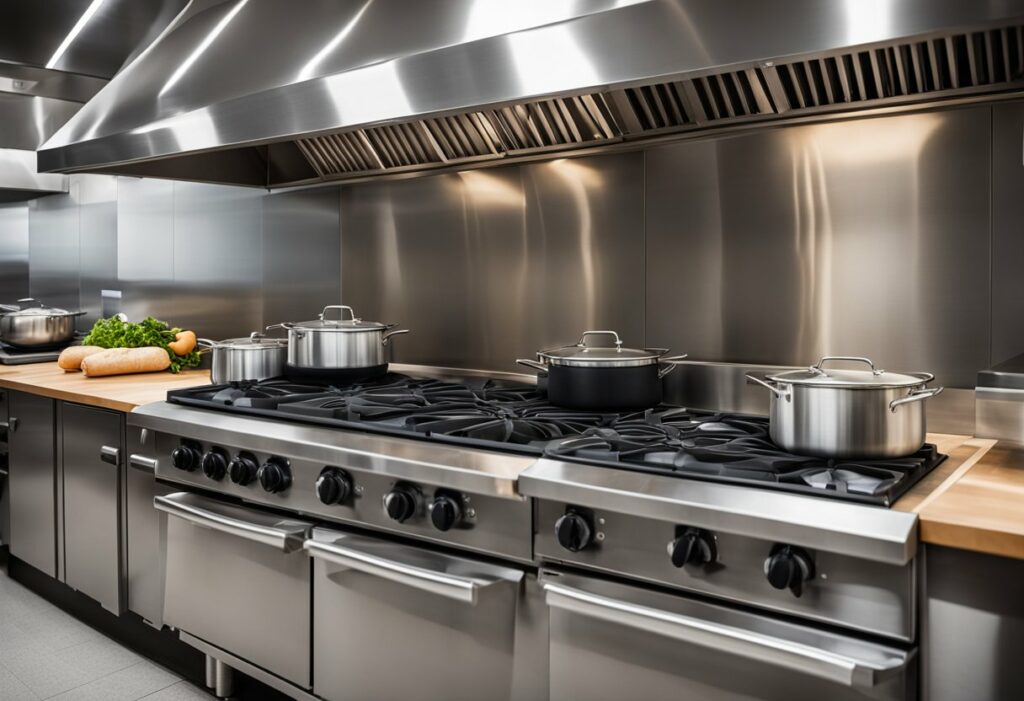Commercial Kitchen Exhaust Hood Design: Innovative Ideas for Your Restaurant
Commercial kitchen exhaust hood design is a crucial aspect of any restaurant or food service operation. It ensures that the air quality in the kitchen is safe for workers and customers, prevents the buildup of harmful gases and particles, and reduces the risk of fire hazards. A well-designed exhaust hood system can also improve the efficiency and quality of cooking operations.
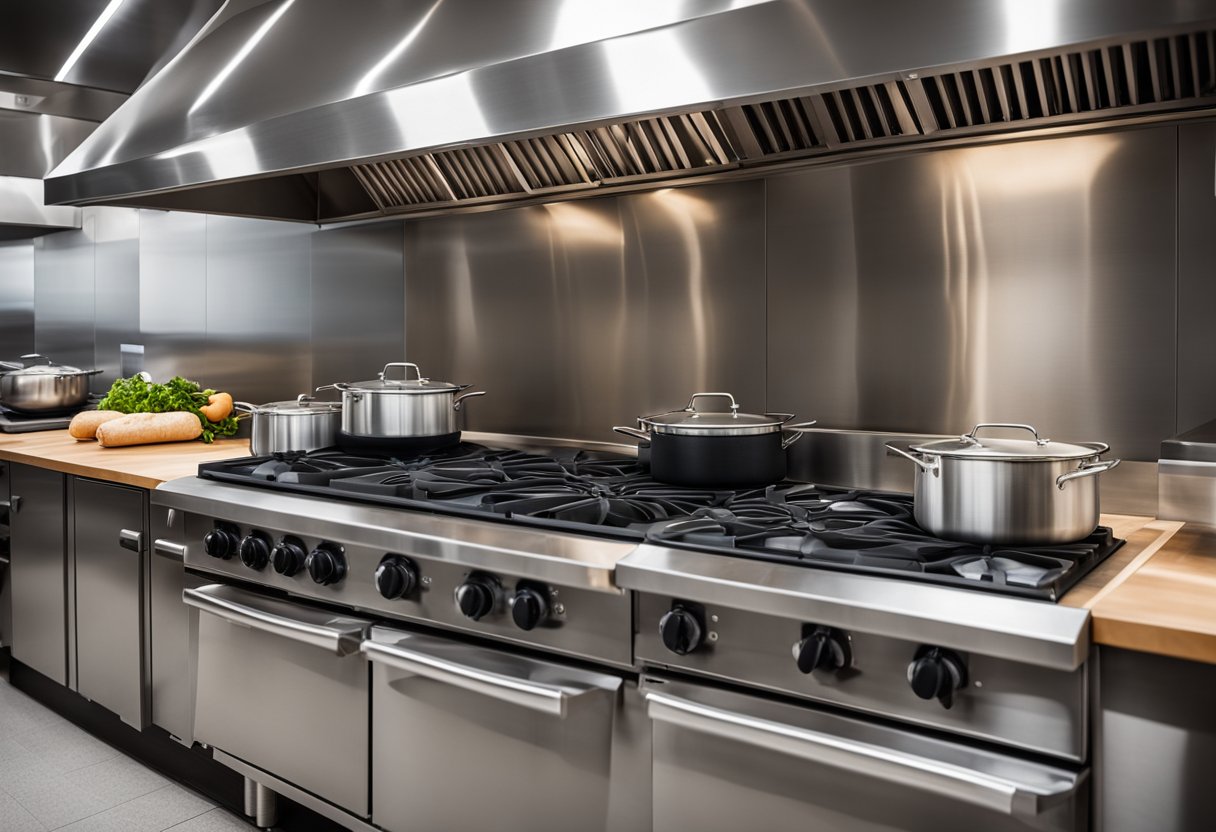
Fundamentals of Exhaust Hood Design When designing a commercial kitchen exhaust hood system, several factors must be considered, including the size of the kitchen, the type of cooking equipment, and the volume of air that needs to be removed. The hood should be sized to capture all the smoke, grease, and steam produced by the cooking equipment effectively. The hood’s height and placement should also be considered to ensure that it creates a proper airflow pattern and doesn’t interfere with the cooking process.
Operational Considerations and Best Practices Once the exhaust hood system is installed, it’s crucial to follow operational best practices to ensure its effectiveness and safety. This includes regular cleaning and maintenance of the system, monitoring the airflow and pressure, and ensuring that the makeup air system is balanced correctly. Proper training of kitchen staff on the use and maintenance of the exhaust hood system is also essential to ensure its longevity and effectiveness.
Key Takeaways
- Proper commercial kitchen exhaust hood design is vital to ensure a safe and healthy working environment.
- The exhaust hood system must be designed to capture all the smoke, grease, and steam produced by the cooking equipment effectively.
- Regular cleaning and maintenance of the exhaust hood system are essential to ensure its effectiveness and safety.
Fundamentals of Exhaust Hood Design
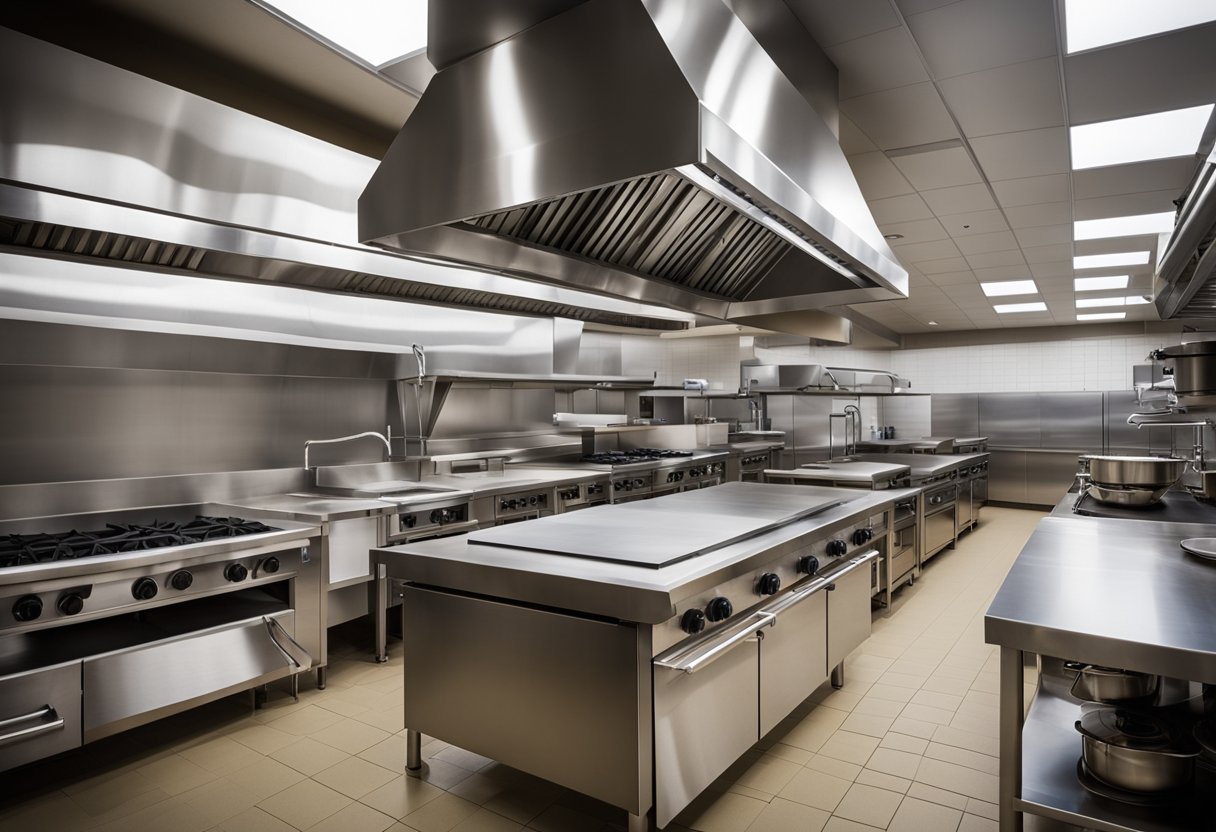
As a commercial kitchen owner, you know that proper ventilation is crucial to the safety and comfort of your staff and customers. A well-designed kitchen exhaust hood system is essential to remove heat, smoke, grease, fumes, vapours, and odours from your kitchen, ensuring a clean and healthy environment. In this section, we will discuss the fundamentals of exhaust hood design and the key factors you need to consider when selecting a commercial kitchen exhaust hood system.
Understanding Ventilation and Airflow
The first step in designing a kitchen exhaust hood system is to understand the ventilation and airflow requirements of your kitchen. The ventilation system should be designed to provide sufficient airflow to remove heat, smoke, grease, and other contaminants from the kitchen. It should also balance the air pressure within the kitchen to prevent the escape of smoke and odours into the dining area. Proper airflow balancing is essential to ensure the efficient operation of the kitchen exhaust hood system.
Compliance with Codes and Regulations
When designing a commercial kitchen exhaust hood system, it is essential to comply with local regulations and codes. These regulations specify the minimum requirements for the size, type, and installation of kitchen hoods, ductwork, and exhaust outlets. Compliance with these regulations is necessary to ensure the safety of your staff and customers and to avoid costly fines and penalties.
Selecting the Right Hood Type
Selecting the right hood type is crucial to the efficient operation of your commercial kitchen exhaust hood system. There are several types of hoods available, including Type I hoods, Type II hoods, grease hoods, and condensate hoods. The hood style you choose will depend on the type of cooking equipment you have and the volume of smoke, grease, and moisture generated by your kitchen.
Incorporating Fire Suppression and Safety Features
Fire suppression systems and other safety features are essential components of a commercial kitchen exhaust hood system. These systems are designed to detect and suppress fires that may occur in the kitchen, preventing them from spreading to other areas of the building. It is important to ensure that your kitchen exhaust hood system includes a fire suppression system and other safety features to protect your staff and customers.
Materials and Construction Considerations
The materials and construction of your commercial kitchen exhaust hood system are critical to its quality and support. Stainless steel is the most commonly used material for kitchen hoods because it is durable, easy to clean, and resistant to corrosion. The construction of the hood should be sturdy and well-supported to ensure its longevity and efficient operation.
Efficiency and Comfort in the Kitchen
Efficiency and comfort are essential considerations when designing a commercial kitchen exhaust hood system. The system should provide adequate makeup air to replace the air removed by the hood, ensuring a comfortable working environment for your staff. It should also be designed to remove heat, smoke, and odours efficiently, improving the air quality in the kitchen and preventing the buildup of moisture and condensation.
Maintenance and Service Requirements
Regular maintenance and service are essential to the efficient operation of your commercial kitchen exhaust hood system. The system should be cleaned and inspected regularly to ensure that it is functioning correctly and to prevent the buildup of grease and other contaminants. Parts and labour costs should also be considered when selecting a kitchen exhaust hood system.
Designing for Specific Cooking Equipment
The design of your commercial kitchen exhaust hood system should be tailored to the specific cooking equipment you have in your kitchen. Different appliances generate different amounts of heat, smoke, and grease, and the hood should be designed to handle the specific requirements of each appliance.
Optimising for Heat and Odor Control
Heat and odor control are essential considerations when designing a commercial kitchen exhaust hood system. The hood should be designed to remove heat and moisture from the kitchen, preventing the buildup of condensation and improving the comfort of your staff. It should also be designed to remove odours efficiently, preventing them from escaping into the dining area.
Installation and Kitchen Layout Planning
Proper installation and kitchen layout planning are essential to the efficient operation of your commercial kitchen exhaust hood system. The hood should be installed at the correct distance and height from the cooking equipment, and the ductwork should be designed to minimize bends and turns. The layout of your kitchen should also be designed to ensure that the hood system is efficient and effective.
Operational Considerations and Best Practices
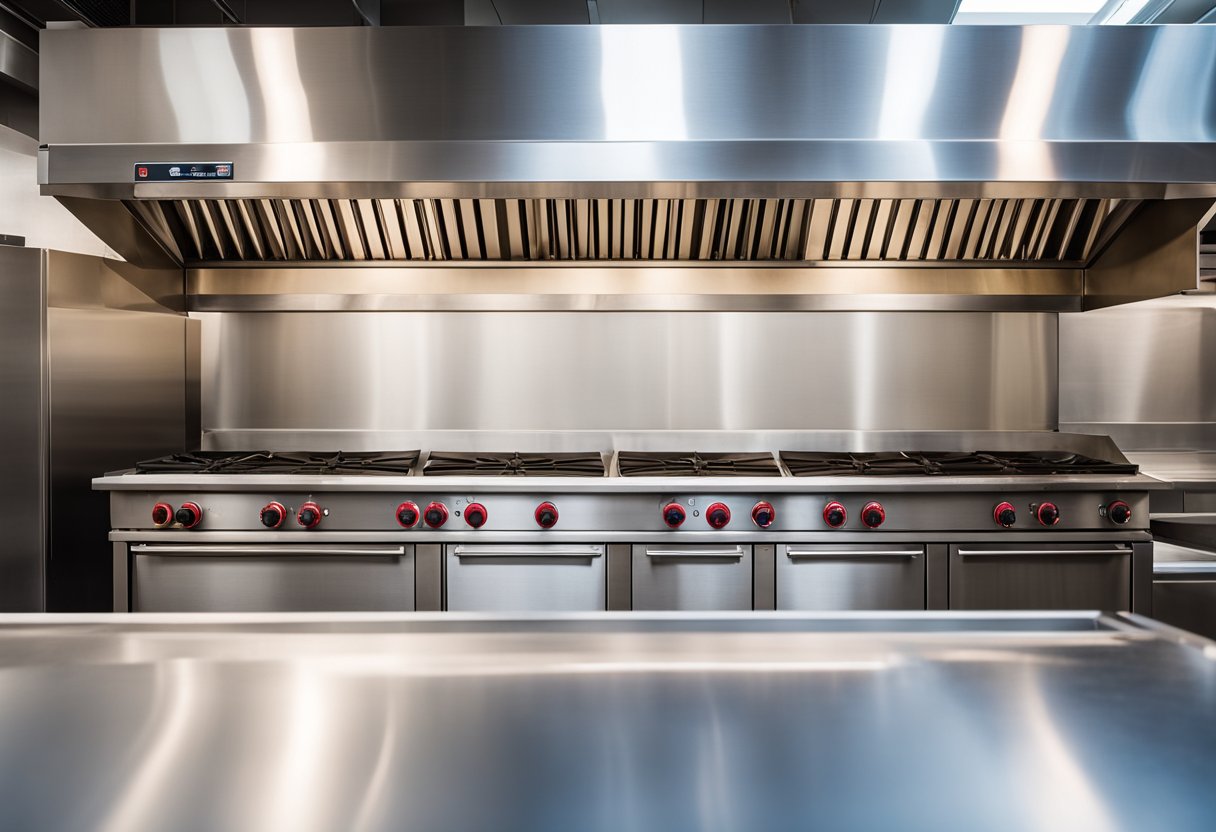
When it comes to commercial kitchen exhaust hood design, there are several operational considerations and best practices that you should keep in mind to ensure that your system is efficient, safe, and compliant with regulations. Here are some key factors to consider:
Ensuring Proper Ductwork and Clearance
One of the most important considerations when designing a commercial kitchen exhaust hood system is ensuring that the ductwork is properly sized and installed. Ducts that are too small can cause airflow issues and lead to the buildup of grease and other combustible materials, while ducts that are too large can result in excessive noise and energy usage. Additionally, it’s important to ensure that there is adequate clearance around the hood and ductwork to prevent fire hazards and allow for proper cleaning and maintenance.
Balancing Airflow and Makeup Air Systems
Another crucial factor in commercial kitchen exhaust hood design is balancing the airflow and makeup air systems. This involves ensuring that the exhaust system is capable of removing all of the cooking fumes, smoke, and heat from the kitchen, while also providing enough makeup air to maintain a comfortable and safe environment for workers and customers. Proper airflow balancing can also help to improve the efficiency and energy usage of the system.
Implementing Regular Cleaning and Maintenance
To ensure that your commercial kitchen exhaust hood system remains safe and efficient over time, it’s essential to implement regular cleaning and maintenance practices. This includes cleaning the grease filters, ductwork, and exhaust fans on a regular basis to prevent the buildup of grease and other combustible materials. It’s also important to schedule regular inspections and testing to identify any potential issues before they become a safety hazard.
Adhering to Inspection and Testing Protocols
Finally, it’s important to adhere to all relevant inspection and testing protocols to ensure that your commercial kitchen exhaust hood system is compliant with regulations and safe for use. This may involve regular inspections by local fire departments or other regulatory agencies, as well as testing to ensure that the system is operating at the appropriate CFM levels and is in compliance with all relevant codes and standards.
By following these operational considerations and best practices, you can ensure that your commercial kitchen exhaust hood system is safe, efficient, and compliant with all relevant regulations.
Frequently Asked Questions
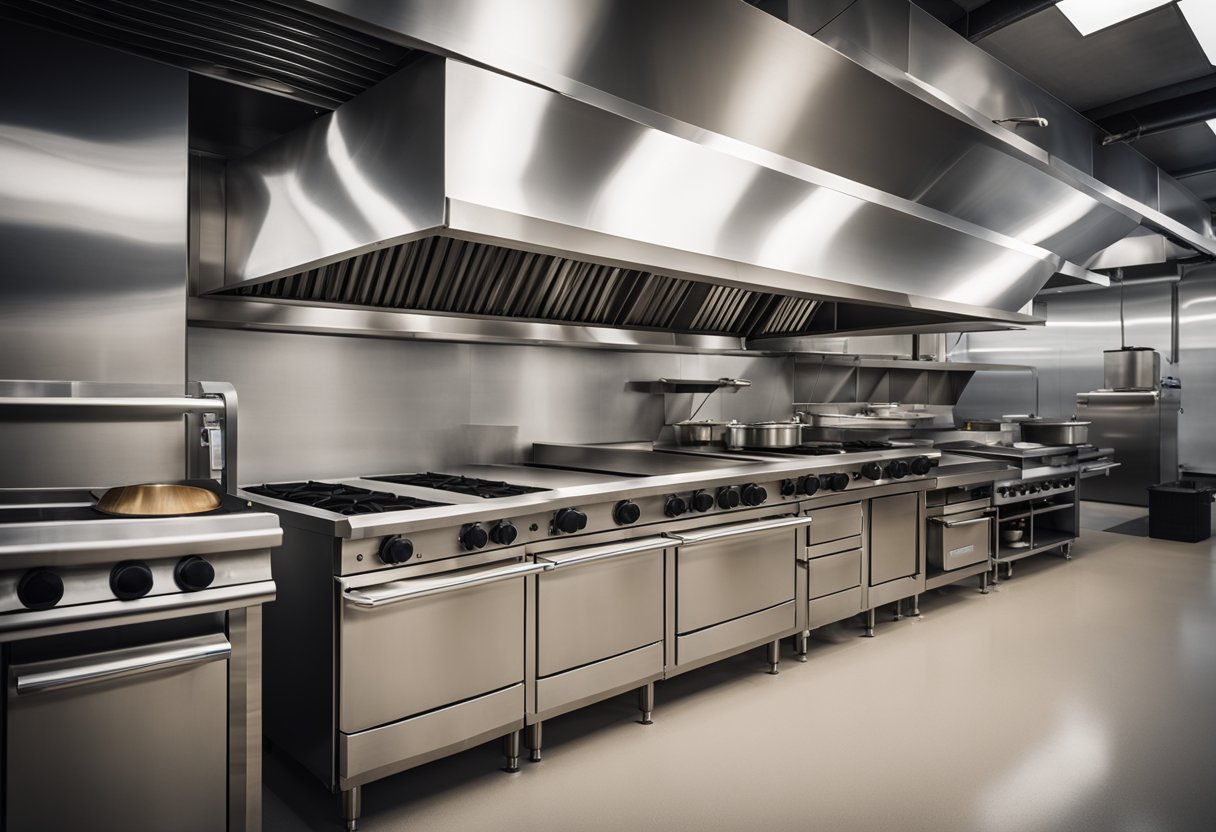
What are the essential considerations for designing a small commercial kitchen exhaust hood?
When designing a small commercial kitchen exhaust hood, there are several essential considerations to keep in mind. First, you need to determine the type of hood that will best suit your needs. There are two types of commercial kitchen hoods, Type I and Type II hoods. Type I hoods are designed to remove heat, smoke, and airborne grease, while Type II hoods are used to remove steam and vapours from non-grease producing appliances.
Next, you need to consider the size of the hood. The hood should be large enough to cover all the cooking equipment and extend beyond the edges of the equipment by at least six inches. The height of the hood should be at least six inches higher than the tallest pot or pan on the stove.
How can I determine the appropriate size for an exhaust fan in a commercial kitchen setting?
The size of the exhaust fan in a commercial kitchen setting depends on the size of the kitchen and the number of cooking appliances. As a general rule, the exhaust fan should be able to move at least 1 cubic foot of air per minute (CFM) for every square foot of kitchen space.
To determine the appropriate size for your exhaust fan, you can use a simple formula. Multiply the length, width, and height of your kitchen in feet to get the total cubic feet of the kitchen. Then, multiply the cubic feet by the number of air changes per hour (ACH) recommended by ASHRAE. Finally, divide the result by 60 to get the CFM required for your exhaust fan.
What are the latest guidelines from ASHRAE for commercial kitchen ventilation design?
The latest guidelines from ASHRAE for commercial kitchen ventilation design recommend a minimum of 6 air changes per hour (ACH) for kitchens with light cooking loads, and up to 20 ACH for kitchens with heavy cooking loads.
ASHRAE also recommends that the hood should extend beyond the edges of the cooking equipment by at least six inches, and the hood should be at least six inches higher than the tallest pot or pan on the stove. The exhaust fan should be able to move at least 1 cubic foot of air per minute (CFM) for every square foot of kitchen space.
Can you suggest effective ways to optimise kitchen exhaust hood performance in a bustling culinary environment?
To optimise kitchen exhaust hood performance in a bustling culinary environment, you need to make sure that the hood and exhaust fan are properly installed and maintained. The hood should be cleaned regularly to prevent the buildup of grease and other contaminants, which can reduce the effectiveness of the hood.
You can also install a variable speed control on the exhaust fan, which will allow you to adjust the fan speed based on the cooking load. This will help to ensure that the fan is providing the necessary ventilation without wasting energy.
What factors should I weigh when selecting the best exhaust hood for my commercial kitchen?
When selecting the best exhaust hood for your commercial kitchen, you need to consider several factors. First, you need to determine the type of hood that will best suit your needs. Type I hoods are designed to remove heat, smoke, and airborne grease, while Type II hoods are used to remove steam and vapours from non-grease producing appliances.
Next, you need to consider the size of the hood. The hood should be large enough to cover all the cooking equipment and extend beyond the edges of the equipment by at least six inches. The height of the hood should be at least six inches higher than the tallest pot or pan on the stove.
Where can I find a comprehensive design guide for commercial kitchen ventilation systems?
There are several comprehensive design guides available for commercial kitchen ventilation systems. One such guide is provided by ASHRAE, which provides detailed information on the design and installation of commercial kitchen ventilation systems. Another guide is provided by the Commercial Kitchen Ventilation (CKV) Design Guide, which covers everything from selecting and sizing exhaust hoods to recent innovations and energy-efficient design.

